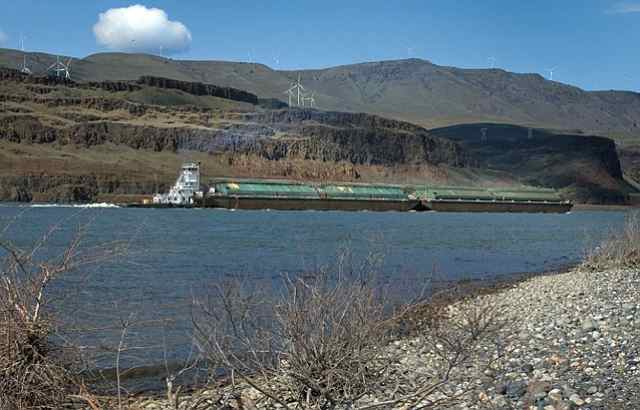forum
library
tutorial
contact

Ag Industry Gears Up for
14-week River Closure
by Matthew Weaver
Capital Press, November 30, 2016
|
the film forum library tutorial contact |

|
Ag Industry Gears Up for
by Matthew Weaver
|
Information from the corps includes repairs costing at least $33 million.
 Ag industry representatives say they're as ready as possible for an upcoming 14-week closure of the Columbia/Snake river system that carries their goods overseas.
Ag industry representatives say they're as ready as possible for an upcoming 14-week closure of the Columbia/Snake river system that carries their goods overseas.
The U.S. Army Corps of Engineers is closing the river from Dec. 12 through March 20. The extended closure allows the corps to make repairs at six dams on the river system, including navlock controls at Bonneville Lock and Dam and new operating machinery for the downstream gate at Ice Harbor Lock and Dam. Information from the corps includes repairs costing at least $33 million.
The closure affects grain traffic and other commodities which use the river system for overseas export, said Kristin Meira, executive director of the Pacific Northwest Waterways Association.
"This is an investment in U.S. infrastructure and ultimately an investment in the reliability of U.S. products," she said.
"The industry has taken all the steps it can to prepare for the long closure," said Dan Hart, general manager of Almota Elevator Co. in Colfax, Wash. "(The corps) was extremely proactive in getting the word out to all affected parties so there was ample time to plan for the disruption."
Companies must have their last barge loaded by Dec. 10, said Damon Filan, manager of Tri-Cities Grain in Pasco, Wash., and industry representative for the Washington Grain Commission.
Grain companies aren't likely to get all the barges they ordered, due to rainy weather that slowed the fleet down, Filan said.
"We'll probably get 90 to 95 percent of the barges we have ordered," he said. "We still have contracts we have to fill, so we may have to figure out ways to buy rail or whatever we'll have to do."
The biggest concern is unforeseen complications that delay reopening, Hart said.
"This could have a serious financial impact on shippers and exporters if it were longer than a day or two," he said.
The corps held stakeholder outreach sessions and monthly conference calls leading up to the closure. Calls will be weekly during the closure to keep stakeholders informed, Meira said.
The closure is a week less than the first river closure six years ago, Meira said. At that time, there were more unknowns, she said.
"What we learned is, with the proper planning and funding, it could be done," she said. "I think there's a lot more confidence from all involved that we're prepared for success a second time around."
Last time, wheat prices were high and moving higher before harvest, Hart said. A large percentage of the crop was priced and ready to move, and export sales were on the books before the closure.
This year, with sluggish market conditions and prices at eight-year lows, a higher percentage of the crop is left in the country, Hart said.
"There could still be some variabilities that might make it a little bit tight," Filan said. "There's so much grain in the world that, if we can't supply -- and I think we can -- someone else will."
The industry reps say the closure is necessary to maintain a vital river system.
"This is the way you want to get this work done, rather than waiting for something to break and then having an unplanned, catastrophic closure with major impacts in the region and ultimately in other parts of the nation," Meira said.
learn more on topics covered in the film
see the video
read the script
learn the songs
discussion forum
